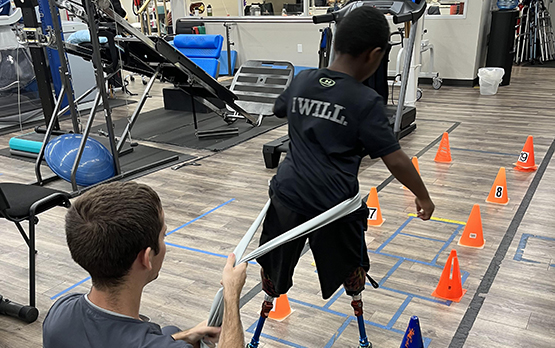Balance and Gait
Balance and Gait Physical Therapy at Therapy SPOT Bellaire focuses on improving the balance and walking patterns of individuals of all ages. Whether you’re recovering from an injury, managing a neurological condition, or looking to enhance your stability, our team is here to help you regain confidence in your movements and improve your overall mobility.
Gait, or walking patterns, can be significantly improved through targeted exercises and other neuromuscular interventions. Our specialized treatment plans focus on both standing balance and dynamic stability, addressing challenges while you’re still as well as when you’re walking or engaging in daily functional movements. This comprehensive approach helps prevent falls, improves safety during movement, and promotes independence.
Our physical therapists are highly trained to work with individuals experiencing neurological conditions such as stroke, Parkinson’s disease, and multiple sclerosis, as well as those recovering from orthopedic injuries. We use a combination of hands-on techniques, personalized exercises, and the latest research-based methods to restore balance and optimize gait. Our goal is to help you move safely and confidently, improving your overall quality of life and reducing the risk of falls.

